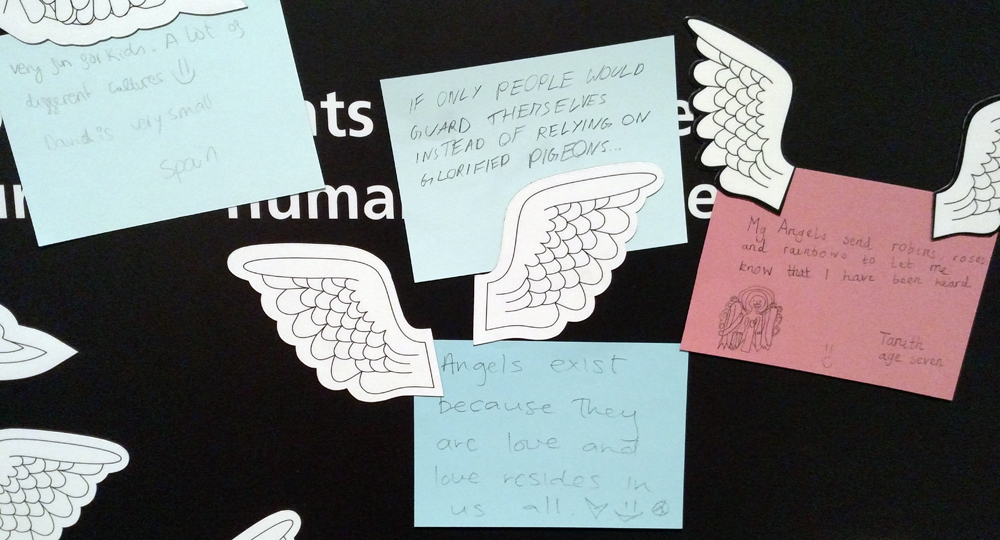Secularism the Scottish Way: What the US Can Learn from a Majority Non-Religious Country
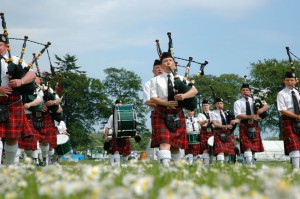
How can religion be discussed in a secular way? Do conversations about religion inherently promote a religious agenda, or can the topic of religion be neutral?
These are difficult questions to answer, especially in particularly religious regions of the United States, where majority faiths all too often end up dominating conversations surrounding belief and nonbelief both in the public and private spheres. However, I recently encountered—in Glasgow, Scotland—an alternative model for how religion can be discussed and represented in a secular way.
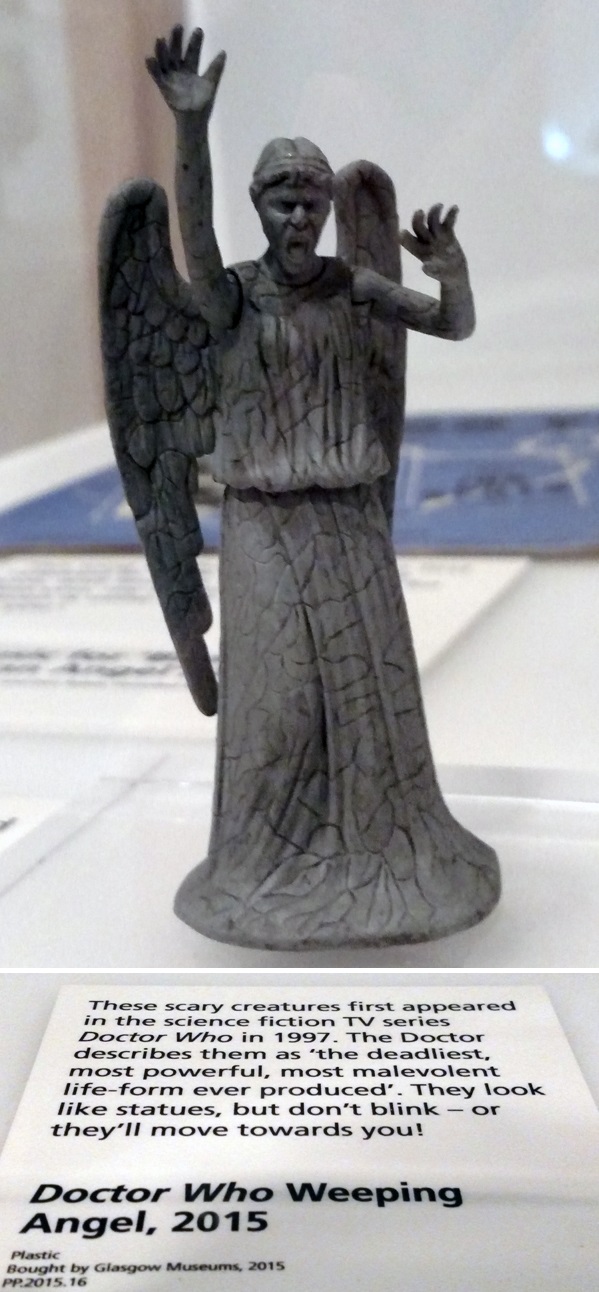 The cultural climate of Scotland, unlike that of the United States, is strongly secular, despite having an official Church of Scotland, which promotes the Presbyterian faith. Earlier this month, a survey published by Scottish Social Attitudes revealed that 52 percent of individuals in Scotland are religiously unaffiliated. The “Nones,” as they are often called in the United States, are the largest religious demographic in Scotland. Furthermore, in Scotland two-thirds of religious individuals don’t regularly attend services. Given these demographic differences between Scotland and the highly religious United States, one could understand why the Scots might have a more secular perspective on religion.
The cultural climate of Scotland, unlike that of the United States, is strongly secular, despite having an official Church of Scotland, which promotes the Presbyterian faith. Earlier this month, a survey published by Scottish Social Attitudes revealed that 52 percent of individuals in Scotland are religiously unaffiliated. The “Nones,” as they are often called in the United States, are the largest religious demographic in Scotland. Furthermore, in Scotland two-thirds of religious individuals don’t regularly attend services. Given these demographic differences between Scotland and the highly religious United States, one could understand why the Scots might have a more secular perspective on religion.
The St. Mungo Museum of Religious Life and Art in Glasgow gives a good model for this Scottish secular perspective on religion. Though the museum is named after the patron saint of Glasgow, it gives nearly equal time and representation to a variety of religious traditions in its exhibits, including Protestantism, Catholicism, Sikhism, Judaism, Islam, Hinduism, Buddhism, Wicca, and Mormonism, among others. The exhibits also include perspectives on religion from popular culture—and not just the views of a particular religion’s adherents or leaders. For instance, one display on angels features not only religious art but also tattoo designs of angels and models of the Weeping Angels from the BBC television show Doctor Who.
The exhibits also aren’t afraid to criticize the religious traditions on display, and the museum doesn’t shy away from highlighting the glorification of violence in the Christian crusades, as well as the more recent and bloody conflicts in Ireland between Catholics and Protestants. In portraying missionary work, the museum’s exhibits acknowledge that missionaries have provided justification for colonization. As one informative plaque in the museum states: “Through lack of understanding and respect, whole cultures and peoples have been destroyed.”
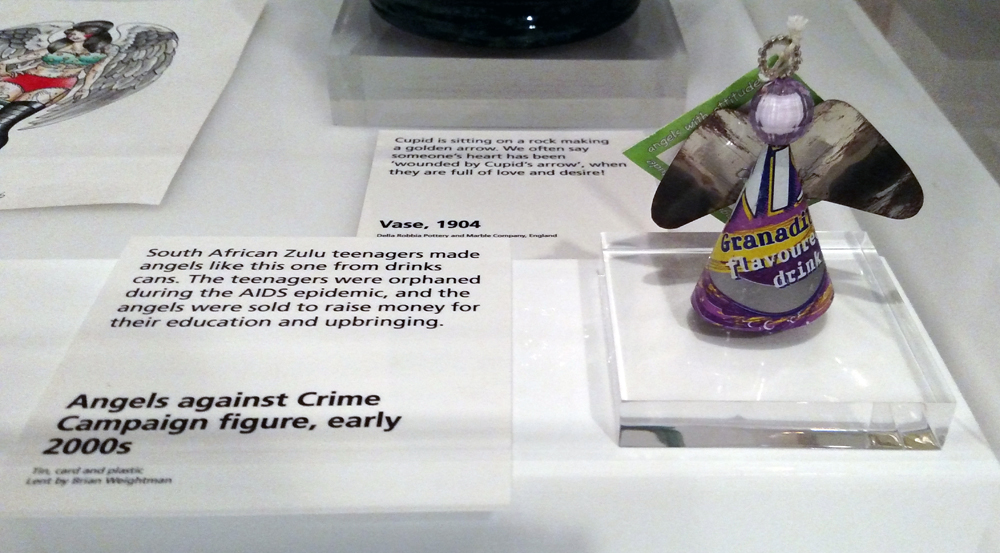 While the St. Mungo museum is certainly not shy about criticizing religion, it also strikes a balance between honest, factually based criticism and respect for people who hold religious beliefs. One exhibit, for instance, focuses on angel figures crafted out of soda cans by Zulu teenagers to raise money for children orphaned by the AIDS epidemic. Another exhibit depicts anti-war efforts by Govan Women Against the Bomb and how anti-nuclear activist movements have united humanists and religious individuals in their shared desire for world peace.
While the St. Mungo museum is certainly not shy about criticizing religion, it also strikes a balance between honest, factually based criticism and respect for people who hold religious beliefs. One exhibit, for instance, focuses on angel figures crafted out of soda cans by Zulu teenagers to raise money for children orphaned by the AIDS epidemic. Another exhibit depicts anti-war efforts by Govan Women Against the Bomb and how anti-nuclear activist movements have united humanists and religious individuals in their shared desire for world peace.
In fact, seeing a variety of different religions displayed in such a neutral way almost seemed, to me at least, to be a tacit promotion of humanism. At one exhibit dedicated to various religious perspectives on fertility and motherhood, I was struck by how similar and almost universal the images of mother and child were—whether they were the Virgin Mary and the Infant Jesus or the Egyptian Goddess Isis with her son Horus. From my view, these images seemed to point to a shared human understanding of the importance of parental love, not to any sort of higher power or omnipotent deity.
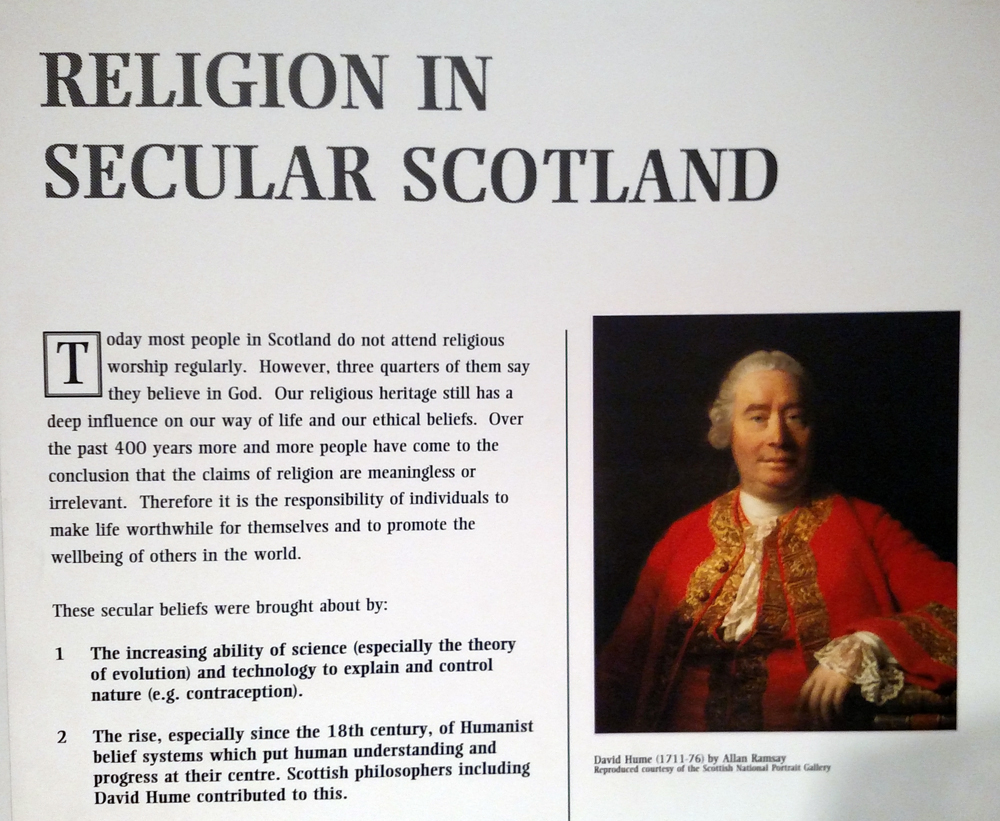 Though the museum’s presentation of religion is neutral and balanced, its presentation of humanism leaves something to be desired. Instead of including a mention of the Humanist Society of Scotland and the traditions and rituals it builds outside of religion, the museum only includes a poster about Scottish skeptic philosopher David Hume titled “Religion in Secular Scotland.” In explaining the growth of secularism in Scotland, the poster depicts the increasing awareness of the humanist philosophy as well as scientific understandings of our natural world and a growing disillusionment with the evil acts committed in the name of religion. However, the poster also attributes increasing secularism to Communism and to consumerism—two ideas that seem at odds with each other and that serve to uphold erroneous stereotypes about humanists and nonreligious individuals.
Though the museum’s presentation of religion is neutral and balanced, its presentation of humanism leaves something to be desired. Instead of including a mention of the Humanist Society of Scotland and the traditions and rituals it builds outside of religion, the museum only includes a poster about Scottish skeptic philosopher David Hume titled “Religion in Secular Scotland.” In explaining the growth of secularism in Scotland, the poster depicts the increasing awareness of the humanist philosophy as well as scientific understandings of our natural world and a growing disillusionment with the evil acts committed in the name of religion. However, the poster also attributes increasing secularism to Communism and to consumerism—two ideas that seem at odds with each other and that serve to uphold erroneous stereotypes about humanists and nonreligious individuals.
Despite the short shrift given to humanism, which is more of a worldview than a religion in the sense that we tend to think of religion, the St. Mungo Museum of Religious Life and Art demonstrates overall that there are ways to discuss religion without actually promoting its views. It presents many religious traditions, and it discusses all of them in a fair and factual manner that strikes a balance between criticism and praise. Perhaps people in the United States, in their attempts to find ways to have neutral and even-handed discussions of religion, could learn something from Scotland and its largely secular population.
